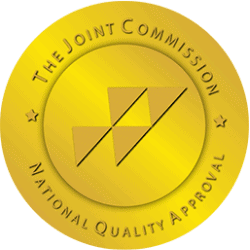According to the American Psychological Association, studies suggest that as many as 17 percent of adolescents and 15 percent of college students have engaged in a dangerous practice known as self-injury. Self-injury also occurs among children and adults, though it is less common within these age groups.
This means that millions of people throughout the world have intentionally harmed themselves.
These statistics lead to many questions.
What could possibly cause people to cut, burn, or otherwise hurt themselves? What is self-injury disorder? How can you tell if someone you care about has developed this condition? And, perhaps most important of all, can self-injury disorder be treated?
What is Self-Injury Disorder?
The fifth edition of the Diagnostic and Statistical Manual of Mental Disorders (DSM-5) does not contain established criteria to determine what is self-injury disorder.
In the DSM-5, self-injury disorder is identified as nonsuicidal self-injury, or NSSI. Other sources have referred to self-injury disorder as self-harm, self-abuse, and self-mutilation.
Self-injury can take many forms. People who engage in self-injurious behaviors may do one or more of the following:
- Cut or stab themselves
- Burn their skin
- Pull out their hair
- Hit their head or other body parts against walls or other hard objects
- Repeatedly punch themselves
- Pick at their skin
- Interfere with the healing of cuts or other wounds
As suggested by the clinical term that is used in the DSM-5, people who engage in self-injury are not trying to end their lives. Self-injurious behaviors are not suicidal behaviors. However, research indicates that self-injury can increase a person’s risk for suicide.
Is Self-Injury an Addiction?
Self-injury may be best described as a compulsive behavior. Compulsive behaviors are similar to addictions. Both can involve overwhelming urges and a loss of self-control.
Self-injury may be a symptom of a mental health disorder or an unhealthy coping mechanism.
Some people engage in self-injury as a way to punish themselves. Others do so in a misguided attempt to exert control over their body or deal with intense psychological pain.
The DSM-5’s proposed criteria for nonsuicidal self-injury includes the following potential reasons for this behavior:
- To experience relief from negative thoughts or emotions
- The resolution of interpersonal difficulties
- To elicit positive feelings
Regardless of what prompts people to intentionally hurt themselves, anyone who does so should seek professional help. Continued self-harm can lead to medical problems, the onset or worsening of mental health concerns, and a host of additional negative outcomes.
Self-Injurious Symptoms and Behaviors
People who have been intentionally injuring themselves often go to great lengths to hide the evidence of their behaviors. This means it can be difficult to detect if someone you know is in danger. However, the longer a person engages in self-injury, the harder it becomes to keep it a secret.
Here are a few symptoms and behaviors that may indicate a person is struggling with self-injury disorder:
- They often wear long sleeves and long pants, even in warm weather. This may be an effort to hide evidence of cuts, burns, or bruises.
- They refuse to change clothes in the presence of other people. This also can be an effort to prevent others from seeing their injuries.
- They often claim to have slipped, fallen, or otherwise accidentally injured themselves.
- Their injuries seem to always occur on the same area of their body.
- They often carry a knife, razor blade, needle, or other sharp object.
- Making self-deprecating remarks or otherwise put themselves down.
- The tendency to act impulsively, which can include sudden outbursts of anger or self-hatred.
- Engaging in risky, reckless, or dangerous behaviors. This may be an attempt to indirectly hurt themselves.
If someone that you know has been exhibiting signs of self-injury, they may need immediate medical attention as well as effective mental health treatment.
Treatment for Self-Injury Disorder
One of the most important parts of treatment for self-injury is identifying the cause of the behavior.
For example, self-harm can be a symptom of post-traumatic stress disorder (PTSD) or an effect of untreated trauma. In such cases, the person who has been engaging in self-harm would need to receive appropriate care through a trauma program.
Similarly, if a person has become addicted to alcohol or another drug, their treatment must address their substance use disorder as well as their self-harm.
Depending on the information that is collected during a person’s intake assessment, their treatment for self-injury may involve therapy, medication, or a combination of the two.
The therapeutic component of treatment for self-injury and other mental health symptoms may include cognitive-behavioral therapy (CBT), eye movement desensitization and reprocessing (EMDR) therapy, neurofeedback, 12-Step programming, and a variety of additional services.
During therapy, people can learn how to manage stress, cope with difficult emotions, and resolve conflicts without resorting to self-harm. They can also replace self-defeating thought and behavior patterns with healthier ways of thinking and acting.
Medications may be beneficial if the person has been dealing with certain forms of mental illness. Medications can also help people who are receiving care for addictions to alcohol or opioids.
Begin Treatment for Self-Injury Disorder in South Florida
Untreated self-injury can have a devastating effect on every part of your life. But when you receive comprehensive care at Ambrosia Treatment Center in South Florida, you can regain control of your thoughts and actions. Our team offers compassionate treatment for self-injury in a safe and supportive environment. Visit our admissions page to learn more.




